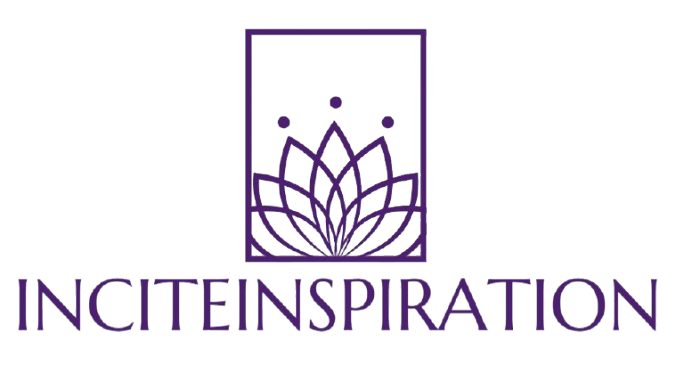In today’s world, where the digital landscape drives both professional and personal lives, remote personal branding has become more crucial than ever. It’s not just about having a polished LinkedIn profile or a flashy resume; it’s about shaping a distinct online persona that showcases your skills, values, and unique qualities—ultimately making you the go-to candidate for remote opportunities.
Remote personal branding allows you to present yourself in the best light, whether you’re actively applying for jobs or passively attracting opportunities. But as enticing as it sounds, building a remote brand isn’t without its challenges. It requires time, effort, and often, stepping outside your comfort zone. But fear not—this guide will provide you with practical tips and insights on how to build an effective remote brand, with the help of cutting-edge AI tools to speed up the process.
What Is Remote Personal Branding?
At its core, remote personal branding is about curating an online presence that highlights your skills, expertise, personality, and values in a way that resonates with remote employers. It’s your digital reputation—the narrative you present to the world about who you are, what you stand for, and what you bring to the table.
This includes:
- Your Career Journey: A clear, concise story about your professional background.
- Your Achievements: Tangible results that demonstrate your value.
- Your Strengths & Values: What sets you apart from others in your field.
- Your Unique Voice: How you communicate and present yourself in writing and visuals.
A well-crafted personal brand can set you apart from the competition in the increasingly crowded remote job market. After all, remote work isn’t just a trend; it’s the future. And the competition for these positions is fierce.
Why Is Remote Personal Branding Important?
As remote work continues to grow in popularity, standing out online has never been more vital. With over 98% of people expressing interest in remote opportunities, the race for remote roles is only intensifying. Studies have shown that remote positions attract seven times more applicants than traditional in-office jobs. This means that your personal brand isn’t just a “nice-to-have” anymore—it’s essential to securing a remote job or growing your freelancing business.

Key Benefits of Remote Personal Branding:
- Control Your Search Results: When hiring managers Google your name, what do they find? With strategic SEO (search engine optimization), you can ensure your website, portfolio, and social media profiles are the first things they see.
- Pitch Yourself 24/7: Your online presence acts as an elevator pitch that works around the clock. A solid personal brand ensures that potential employers can understand your value at any time.
- Increase Your Job Application Success: Building a personal brand that highlights your remote work skills—like tech proficiency, time management, and communication—instantly boosts your credibility and attractiveness to employers.
Steps to Build a Powerful Remote Personal Brand
Building your remote personal brand requires thoughtful planning and consistent effort. Here’s a step-by-step guide to get you started:
1. Define Your Core Identity and USPs (Unique Selling Points)
The foundation of any strong personal brand is knowing what sets you apart. What makes you unique? Whether it’s your technical skills, problem-solving ability, or your passion for creativity, understanding your key strengths will help you market yourself effectively.
Use AI-powered tools like Whimsical or Miro to visually map out your strengths, passions, and motivations. These tools allow you to create mind maps that highlight your USPs and help organize your thoughts clearly. AI can even suggest keywords or responsibilities that employers are likely looking for, fine-tuning your brand message.
2. Craft a Memorable Brand Name
Your personal brand doesn’t have to be just your full name—it can be something more creative that stands out in search results. AI tools like Namelix or NameSnack can generate brand names by combining your name with relevant industry keywords. This makes it easier for potential employers or clients to find you. And once you’ve chosen a name, many of these tools also offer instant domain availability checks, so you can secure a matching domain for your website.
3. Create a Professional Home Base: Your Website
A personal website is the most powerful tool in your remote branding toolkit. It’s your digital hub, showcasing everything from your portfolio and resume to your personal story and contact information.
Platforms like Wix or Squarespace offer no-code website builders that make creating a portfolio site simple, even for beginners. Be sure to include:

- Work Samples: Showcase your best projects, whether that’s design work, code snippets, case studies, or writing samples.
- Testimonials: Client or colleague testimonials add credibility to your brand.
- Blog or Thought Leadership: Share industry insights or tips to position yourself as an expert.
4. Choose a Cohesive Visual Aesthetic
Your aesthetic is how you visually represent your brand. The colors, fonts, and images you choose should reflect your personality and the type of work you do. Websites like Khroma help you choose color palettes based on your preferences, while FontJoy offers AI-driven font pairings to ensure your brand is visually appealing and professional.
Consistency is key. If your website is bright and dynamic, your LinkedIn profile shouldn’t be a stark contrast. Creating a unified aesthetic across your digital platforms is essential to making a lasting impression.
5. Optimize Your Content for SEO
Search engine optimization (SEO) is crucial for remote personal branding. Use the right keywords throughout your website, social profiles, and blog posts to ensure that you show up when potential employers search for your skillset.
AI tools like Copy.AI or Google Bard can help you generate relevant keywords based on your job title, industry, and skills. This allows you to attract organic traffic to your site and improve your chances of being discovered.

6. Leverage Social Media
Social media isn’t just for posting pictures of your lunch—it’s a valuable tool for showcasing your professional identity. Whether it’s LinkedIn, Twitter, or Instagram, each platform should be an extension of your personal brand. Optimize your profiles with strong headlines and keywords that reflect your expertise.
Consider creating dedicated social accounts just for your professional persona. This way, you can maintain boundaries between your personal and professional lives while keeping your online presence focused.
7. Content Creation with AI
Creating content to showcase your expertise doesn’t have to be time-consuming or difficult. AI-powered tools can assist you with everything from generating blog topics and writing posts to curating social media content.
Use tools like Predis.ai to brainstorm content ideas or Canva to design professional graphics quickly. These tools help you consistently share valuable content that enhances your brand and demonstrates your knowledge.
The Bottom Line
Remote personal branding isn’t just about getting a job; it’s about crafting a story that resonates with employers and clients. By defining your unique strengths, creating a strong online presence, and using AI to enhance and streamline your branding efforts, you can position yourself as a top contender in the competitive world of remote work.
Ready to launch your remote career? Start building your personal brand today, and watch as remote job opportunities start to come to you.

